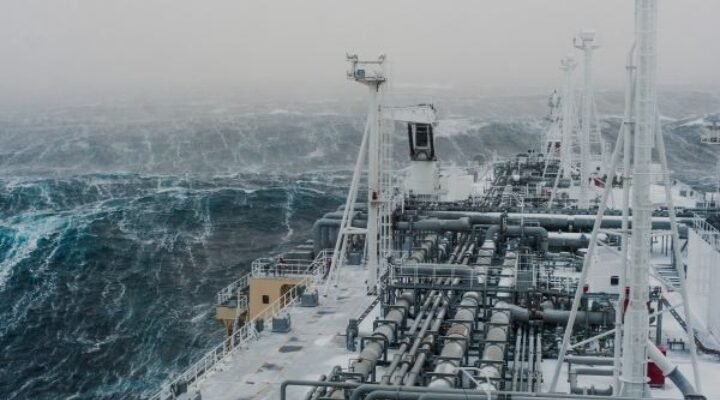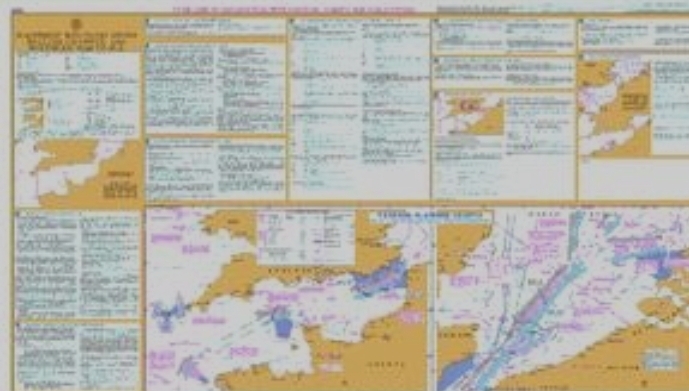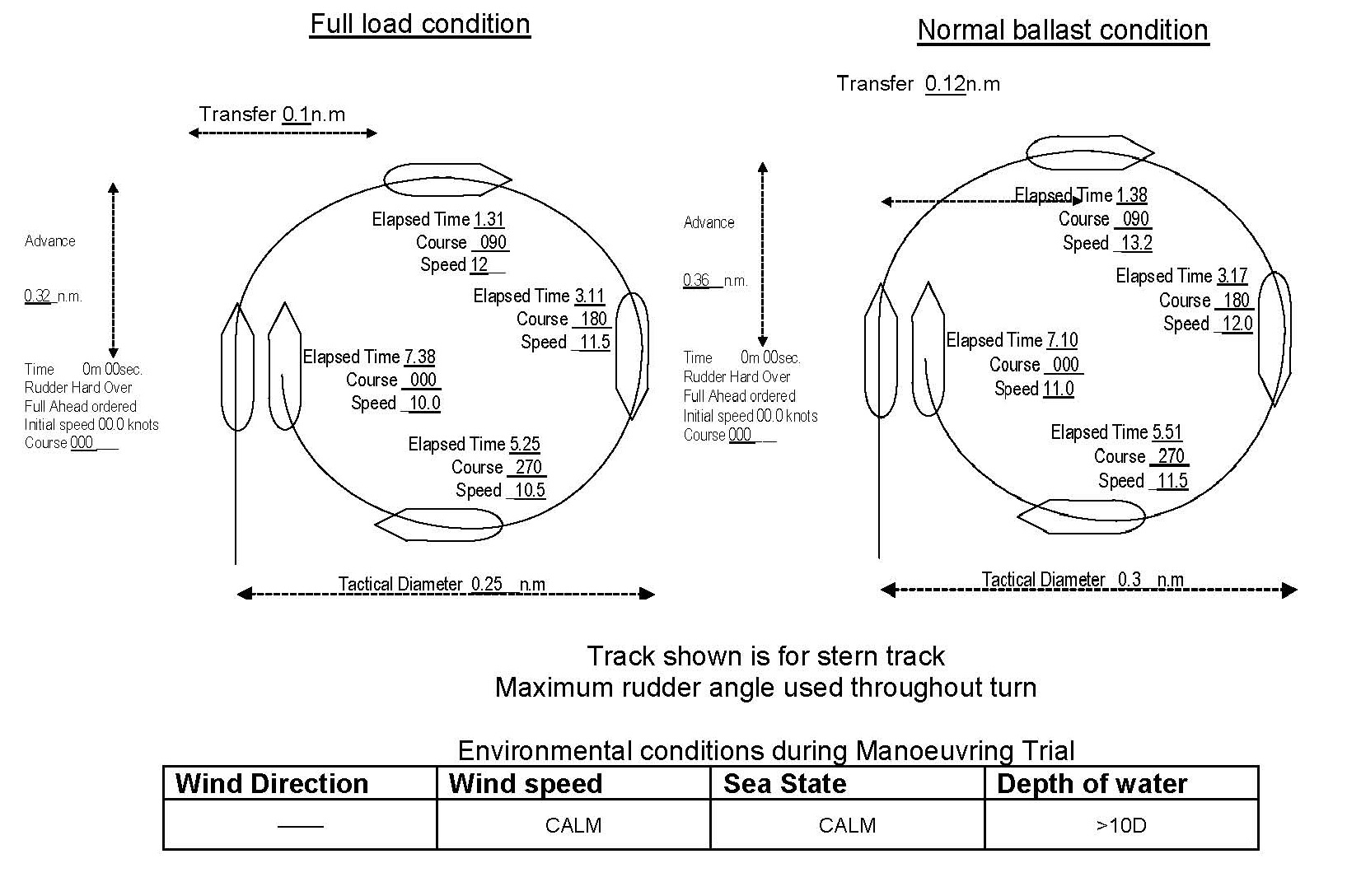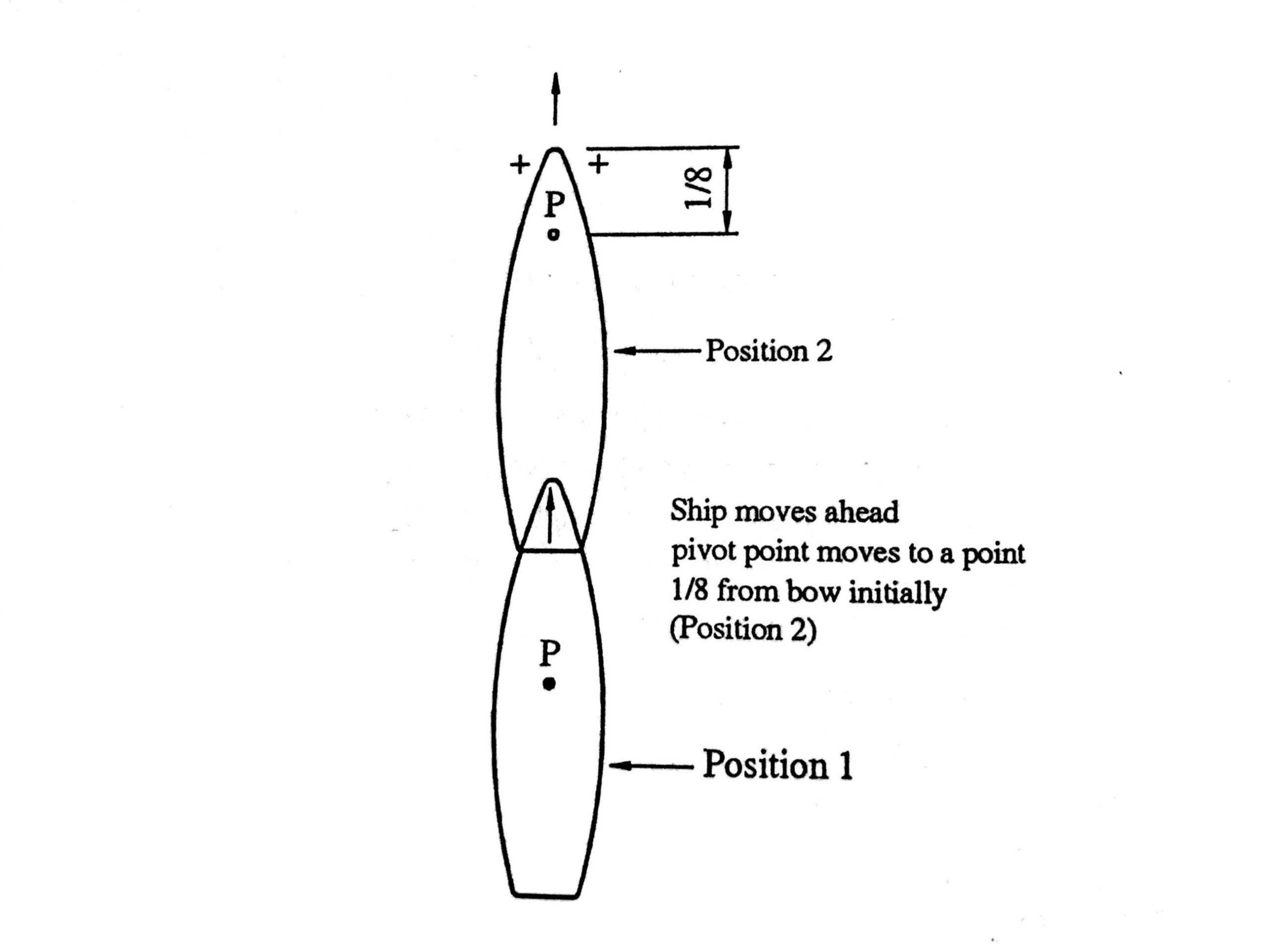Wind pattern
The wind direction and speed is determined by the position of the Highs and Lows.
Wind flows outwards from the high and towards the low, in the northern hemisphere the direction of wind is
anticlockwise around a low and clock wise around a high, similarly in the southern hemisphere the wind flows
towards the low but in clock wise direction and outwards from the high but in anticlockwise direction
The various winds belts are:
- Doldrums or Inter tropical convergence zone (heat equator) or Equatorial trough.
- North east trade winds
- South east trade winds
- The variables ( Horse latitudes)
- Westerlies
North Atlantic:
Doldrums:
- The ITCZ remains north of the equator throughout the year.
- Light winds over this area having a normal width of 200 300 nm (this may vary as per the strength of the
trade winds and may be narrowed down quiet drastically). - The weather being showers, squalls or thunder storms etc
- Good visibility except in rain
North east trade winds
- This area lies above the ITCZ and is anywhere between 10 ˚ N and 30 ˚ N in summer.
- Average strength of wind is force 4 and might reach force 7 occasionally.
- Haze is prevalent in the east part of the trade wind zone.
South West monsoon
- In summer the ITCZ moves up further north close to the coast of NW Africa and this results in the SE trade
winds getting drawn across the equator and veering to become the SW monsoon. - This phenomenon occurs off the W coast Africa of between equator and 15˚N.
- This results in considerable rain and associated poor visibility
Variables (Horse latitudes)
- This is an area lying between the North east trade winds and the westerlies.
- This is an area of light or variable winds and the limit of this area oscillates between 28˚N 32˚N in summer
- The direction of wind is between N and NE and can be considered to be an extension of the NE trade winds
especially in summer.
Westerlies
- This is the area above the Variable and on the polar side of the anticyclone.(north of 40˚N)
- This area experiences predominantly unsettled weather.
- Wind direction is SWly and off the coast of Iceland the weather is worse with the presence of the
permanent Low off the SW coast of Iceland. - In summer the stormy area is reduced around this area and July is the quietest month for storm in this part
of the ocean with wind of force 7 being 7 days a month. - In winter there is a continuous passage of depressions across this zone in an East or NE direction.
- Gales are very common in winter with winds of more than force 7 more than 10 days a month
Fog
- During summer / late Spring Fog is prevalent north of 40˚ N off the coast of New Foundland and the
area enclosed by the iceberg limits ( to say in general) right up to the Baffin bay entrance and the
southern tip of green land.
Hurricane area:
- Hurricanes are very frequent in the west part of the North Atlantic Ocean.
- Areas affected are Caribbean Sea, Gulf of Mexico, Florida, the Bahamas and Bermuda.
- The Hurricane season being June to November and peaking during August – October.
South Atlantic Ocean
Doldrums:
- There is no ITCZ and hence no tropical storms
South east trade winds
- In summer this area lies around 2˚ south of the equator to 28˚/30˚ S.
- In winter it lies extends up to the equator and to the oceanic high lying around 20˚ – 28˚ S
- The direction of the wind is predominantly SE
- Average strength of wind is force 4 and might reach force 7 occasionally.
Variables (Horse latitudes)
- This is an area lying between the South east trade winds and the westerlies.
- This is an area of light or variable winds and the limit of this area oscillates between 26˚S 31˚S in summer
- The direction of wind is between S and SE and can be considered to be an extension of the SE trade winds
especially in summer.
Westerlies (Roaring forties)
- This is the area south of the Variable and on the polar side of the anticyclone.(south of 35˚S)
- This area experiences predominantly unsettled weather.
- There is a continuous passage of Lows from West to east.
- The centres of the lows move from the Cabo de Hornos in the direction of south Georgia and then
approximately along 50˚S - Gales are prevalent south of 40˚S even in summer
- Wind force is 7 for 7 – 9 days per month especially in the area south of a line joining Falkland Islands and
Cape of Good Hope.
Fog
- Fog is prevalent during summer.
North Indian Ocean
- The wind and weather in the north Indian Ocean is dominated by the alteration of the monsoon.
- During the summer it is the SW monsoon
- During the winter it is the NE monsoon
Doldrums:
- The ITCZ remains south of the equator for a major part of the year.
SW trade winds
- Since the ITCZ lies south of the equator the SE trade wind cross the equator and are deflected to the right to
become the SW trade winds. - This area lies above the ITCZ and is covering the whole of the northern Indian ocean
- Average strength of wind is force 6 and might reach force 7 more than 10 days per month
- The worst area is off the Suqutra (250 nm E). The average wind force here is 7
- The severity of the weather might necessitate the reduction of speed by vessels heading west.
North East Monsoon
- This is during the winter of the northern hemisphere (November to march).
- The winds are NE’ly and are caused by the intense high formed over the Central Asia and the Low over
the Central Africa.
Gulf of Aden
- The winds here forms a part of the monsoon circulation.
- SW swell in Summer and NE swell in Winter
South Indian Ocean
Doldrums:
- The ITCZ lies south of the equator from November to April and hardly above the equator except of the
Sumatra where it get to be north of the equator. - Fair weather, Calms and light variable alternating with squalls, heavy showers and thunder storms.
- Good visibility except in rain
North West monsoon
- Since the ITCZ lies south of the equator the north east monsoon winds cross the equator and blow as the
North west monsoon winds in the south Atlantic
South east trade winds
- In summer this area lies between the ITCZ and 30˚S
- In winter it lies between the equator and 27˚S
- The direction of the wind is predominantly E and SE
- Average strength of wind is force 3 – 4 in summer and 4 5 in winter
- The winds reach force 7 or above on 1-3 days per month. And generally in the winter the SE trades average
a force of 5 most of the time.
Variables (Horse latitudes)
- This is an area lying between the South east trade winds and the westerlies. (off the oceanic high)
- This is an area of light or variable winds and the limit of this area oscillates between 30˚S 35˚S between
winter and summer. - The weather is dependent on the intervening east moving Low pressures when it gets cloudy and showery
weather. Normally the weather is Fair/fine associated with the high.
Westerlies (Roaring forties)
- This is the area south of the Variable and on the polar side of the anticyclone.(south of 30˚ – 35˚S)
- Westerly winds predominate.
- This area experiences predominantly unsettled weather.
- There is a continuous passage of Lows from West to east.
- The centres of the lows move south of 50˚S
- Gales are prevalent south of 40˚S especially in winter and also in summer
- Wind force is 7 for more than 10 days per month
Tropical Storms
- Tropical storms occur in the Arabian sea, Bay of Bengal and in parts of south Indian ocean
- Tropical storms are known as cyclones in this region and Hurricanes off the west coast of Australia.
- Arabian Sea May to November (Greatest frequency in October and November)
- Bay of Bengal it is May to November (Greatest frequency in May, June, October and November)
North Pacific ocean
Doldrums:
- The ITCZ remains permanently north of the equator in longitudes East of about 160˚W.
- Light and variable winds alternating with squalls heavy showers or thunder storms.
- The width and the mean position varies with the movement of the sun. the average width is about 150 nm
- The weather being showers, squalls or thunder storms etc
- Good visibility except in rain
North east trade winds
- This area lies above the ITCZ and is anywhere between 10 ˚ N and 30 ˚ N in summer.
- Average strength of wind is force 4 and might reach force 7 occasionally.
- Dust Haze is prevalent along the American coast.
North east Monsoon
- In winter the Asiatic landmass cools down and results in the formation of an intense area of high pressure
over Mongolia and Siberia. - This results in the NE winds associated with the NE monsoon.
- The height of this season is in December January the wind force is likely to reach 7 for 6-10 days a month.
South West monsoon - The intense heating of the land mass in the Summer results in the formation of an intense low over the Asia
( off Karachi and over the coast of California). - The ITCZ is north of the equator and this results in the SE trade winds being drawn across and deflected by
the earths rotation to the right to form the SW winds associated with the south west monsoon. - This is felt in the West part of North pacific ocean and south and east china sea and yellow sea.
Variables (Horse latitudes)
- This is an area lying between the North east trade winds and the westerlies.
- This exists as a belt situated in about 25˚N to 30˚ N in winter and 35˚ N to 40˚N in summer.
- This is an area of light or variable winds.
- In summer winds might reach force 7 only when associated with TRS and otherwise is fair.
- At the height of winter wind force may reach 7.
- In winter the visibility is mostly good except in rain and over the open ocean fog is uncommon.
- In summer Fog and poor visibility become increasingly common towards the northern limit of the zone. ( 40˚
N during this season)
Westerlies
- This is the area above the Variable and on the polar side of the anticyclone.(north of 40˚N)
- This area experiences predominantly unsettled weather.
WINTER
- In winter there is a continuous passage of depressions across this zone from the vicinity of China and
Japan in the NEly direction towards Aleutian Islands and S Alaska and - North of 40˚N the wind force and direction greatly varies with these Lows.
- Gales are very common in winter with winds of more than force 7 more than 10 days a month
- The region of highest Gale frequency extends from E of Japan to the area south of the Aleutians and the
Alaska peninsular - Rain and snow reduce visibility
SUMMER
- Depressions are less frequent, less intense and their tracks are further north than in winter
- Still winds may reach force 7 more than 10 days per month in most areas
- Fog is prevalent west of about 160˚W and occurs for about 5 10 days per month and rising to more
than 10 days per month in some parts - The fog is again prevalent in the west coast of America although not as severe as in areas west of
160˚W.
South Pacific Ocean
Doldrums:
- The ITCZ remains permanently north of the equator in longitudes East of about 160˚W. some areas it lies
just south of the equator. - Light and variable winds alternating with squalls heavy showers or thunder storms.
- The width and the mean position varies with the movement of the sun. the average width is about 50 300
nm - The weather being showers, squalls or thunder storms etc
- Good visibility except in rain
North-west Monsoon
- During the summer in the southern hemisphere the Australian land mass is heated up and results in the
formation of a Low over it. The ITCZ when it lies in the region results in the North east trade winds crossing
the equator and deflected to the left by the earths rotation and becoming the northwest winds associated with
the North-west monsoon.
South east trade winds
- The northern limit of the SE trade wind is determined by the position of the ITCZ.
- In winter it lies between the equator and extends up to 15˚-20˚ S and 30˚S in summer
- The direction of the wind is predominantly SE but varies over different parts of the ocean as per the
characteristics of the intervening land mass and monsoon. - Average strength of wind is force 4 and might reach force 7 occasionally.
Variables (Horse latitudes)
- This is an area lying between the South east trade winds and the westerlies.
- This is an area of light or variable winds and the limit of this area oscillates between 25˚S 40˚S in summer
and 20˚S to 30˚S in winter. - The direction of wind is between S and SE and can be considered to be an extension of the SE trade winds
especially in summer. - The frequency of poor visibility increase with increase in latitude especially off the coast of Peru.
Westerlies (Roaring forties)
- This is the area south of the Variable and on the polar side of the anticyclone.(south of 35˚S)
- This area experiences predominantly unsettled weather.
- There is a continuous passage of Lows from West to east.
- Gales are common in winter south of 40˚S even in summer they are not uncommon.
- Wind force is 7 for 5-10 days per month over most of the area and it is more than 10 days south of 40˚S.
Fog
- Fog is rather common summer and can be expected on 3-5 days per month.



